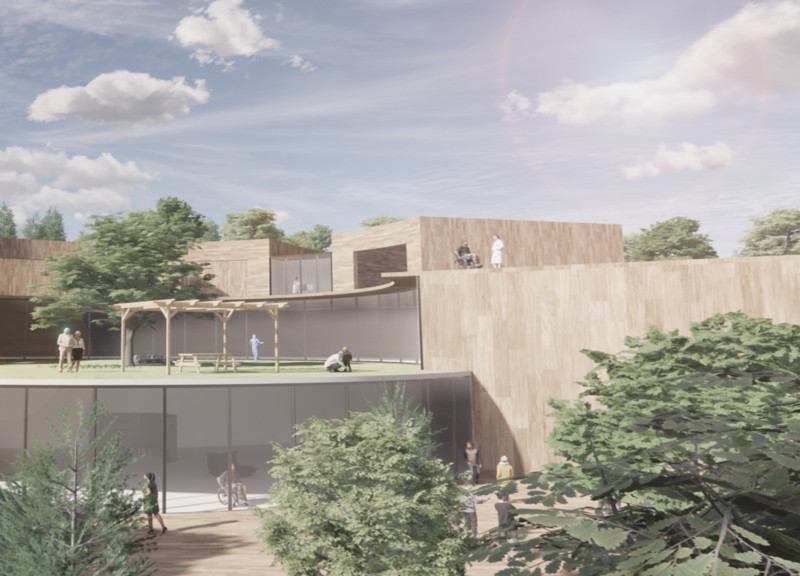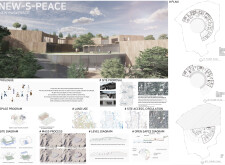5 key facts about this project
**Overview and Context**
The NEW-S-PEACE project is situated in the Bacchanal Resort Village area, designed to provide a space focused on community engagement and the wellness of individuals with terminal illnesses. By addressing the need for interaction between patients and the public, the design seeks to enhance the healing process through supportive relationships. The site has been selected for its accessibility and potential for community integration, with connections to public transportation and nearby amenities that facilitate daily use.
**Spatial Strategy and Layout**
The project’s spatial organization is divided into public and private areas to balance the necessary privacy for patients with opportunities for community interaction. Core programmatic elements include treatment areas that integrate medical care with supportive environments, open gardens that encourage social engagement, and educational facilities designed to raise awareness about terminal illnesses. The accompanying diagrams illustrate the functional relationships among these areas, emphasizing the interaction between communal spaces and more secluded treatment facilities.
**Material Application and Open Space Design**
The choice of materials is integral to the project's calming ethos. An emphasis on natural materials such as wood, glass, and local stone promotes a tranquil atmosphere conducive to healing. The open space design is characterized by a layered approach, differentiating areas for social, reflective, or therapeutic uses, while ensuring smooth transitions between indoor and outdoor environments. Circulation routes are intentionally designed to enhance accessibility and create a natural flow between functional spaces, highlighting the varied user experiences afforded by the site's topography.


















































